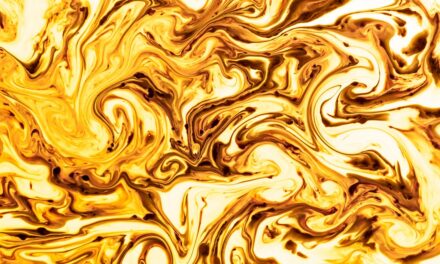The world of calligraphy is a realm where artistry and craftsmanship converge, allowing for the creation of stunning visual narratives through the written word. Among the myriad of tools and materials available to calligraphers, metallic inks stand out as a particularly enchanting option. These inks, imbued with shimmering particles, can transform ordinary lettering into extraordinary works of art, adding depth and dimension that captivates the viewer’s eye.
The allure of metallic inks lies not only in their aesthetic appeal but also in their ability to evoke a sense of luxury and elegance, making them a popular choice for invitations, greeting cards, and other special projects. Metallic inks have a rich history that dates back centuries, often associated with illuminated manuscripts and ornate decorations. In contemporary calligraphy, they have found renewed popularity as artists seek to incorporate modern techniques with traditional practices.
The shimmering quality of metallic inks can evoke a sense of celebration and festivity, making them ideal for occasions such as weddings, anniversaries, and holidays. As calligraphers explore the possibilities offered by these inks, they discover a versatile medium that can enhance their work in myriad ways, from subtle accents to bold statements.
Summary
- Metallic inks add a touch of elegance and luxury to calligraphy projects, making them a popular choice among calligraphers.
- Types of metallic inks available include gold, silver, copper, and bronze, each offering unique effects and finishes.
- When using metallic inks in calligraphy, it’s important to shake the bottle well, use a nib specifically designed for metallic inks, and clean the nib thoroughly after each use.
- Metallic inks can create eye-catching effects such as shimmer, shine, and depth, adding dimension to calligraphy designs.
- Choosing the right paper for metallic inks is crucial, as smooth and non-absorbent papers work best to showcase the metallic sheen and prevent smudging.
Types of Metallic Inks Available
Understanding the Two Main Types
Broadly speaking, these inks can be categorised into two main types: water-based and solvent-based. Water-based metallic inks are often favoured for their ease of use and clean-up. They are typically non-toxic and can be diluted with water to achieve different consistencies, making them suitable for a range of calligraphy styles. These inks tend to have a softer sheen and are ideal for creating delicate effects on paper.
The Benefits of Solvent-Based Inks
On the other hand, solvent-based metallic inks offer a more intense shimmer and are known for their durability. These inks are often used in professional settings where longevity is paramount, such as in commercial printing or signage. However, they require more careful handling due to their chemical composition and may necessitate the use of specific cleaning agents for brushes and nibs.
Exploring Alternative Options
Additionally, some calligraphers may opt for metallic watercolours or acrylics, which provide a unique texture and finish that can be manipulated in various ways.
Tips for Using Metallic Inks in Calligraphy
Utilising metallic inks in calligraphy can be a rewarding experience, but it does come with its own set of challenges. One essential tip for working with these inks is to ensure that they are well-mixed before use. Metallic particles tend to settle at the bottom of the container, so thorough stirring is crucial to achieve an even distribution of shimmer throughout the ink.
This step not only enhances the visual quality of the lettering but also prevents clumping that can lead to inconsistent application. Another important consideration is the choice of nib or brush. Some calligraphers prefer using broader nibs or brushes when working with metallic inks, as these tools can hold more ink and create bolder strokes.
However, finer nibs can also be employed for intricate details and delicate flourishes. It is advisable to test different nibs on scrap paper to determine which one produces the desired effect with the chosen ink. Additionally, practising on various surfaces can help artists understand how different papers interact with metallic inks, allowing for more informed decisions in their final projects.
Creating Eye-Catching Effects with Metallic Inks
The true magic of metallic inks lies in their ability to create eye-catching effects that elevate calligraphic work to new heights. One popular technique is layering, where multiple applications of ink are used to build depth and richness in the lettering. By allowing each layer to dry before applying the next, artists can achieve a stunning gradient effect that adds dimension to their work.
This technique is particularly effective when combined with contrasting colours or different shades of metallic ink. Another captivating approach is the use of negative space. By leaving areas uninked or using a lighter shade of metallic ink against a darker background, calligraphers can create striking visual contrasts that draw attention to specific elements of their design.
Incorporating textures, such as splattering or brushing techniques, can further enhance the overall composition. The interplay between light and shadow created by metallic inks can transform simple lettering into a dynamic piece of art that engages viewers on multiple levels.
Choosing the Right Paper for Metallic Inks
Selecting the appropriate paper is crucial when working with metallic inks, as it can significantly impact the final outcome of a project. Smooth papers are often preferred for calligraphy with metallic inks because they allow for a clean application and prevent the ink from bleeding or feathering. Papers specifically designed for calligraphy or fine art are excellent choices, as they are typically made from high-quality materials that can handle various ink types without compromising integrity.
However, experimenting with textured papers can yield interesting results as well. Papers with a slight tooth can create unique effects by allowing the metallic particles to catch the light differently. It is essential to consider the weight and absorbency of the paper; heavier papers tend to hold up better under multiple layers of ink while lighter papers may buckle or warp if too much moisture is applied.
Ultimately, testing different combinations of paper and ink will help artists discover their preferred materials and achieve their desired aesthetic.
Care and Maintenance of Metallic Inks and Calligraphy Tools
Proper care and maintenance of metallic inks and calligraphy tools are vital for ensuring longevity and optimal performance. After each use, it is essential to clean nibs and brushes thoroughly to prevent any residual ink from drying and clogging the tips. For water-based inks, warm soapy water is usually sufficient; however, solvent-based inks may require specific cleaning solutions designed for such materials.
Regular maintenance not only prolongs the life of tools but also ensures consistent results in future projects. Storage is another critical aspect of maintaining metallic inks. It is advisable to keep them in a cool, dry place away from direct sunlight to prevent degradation of the pigments over time.
Sealing containers tightly after use will help preserve the quality of the ink and prevent evaporation or contamination. Additionally, keeping a record of which inks work best with specific papers or techniques can serve as a valuable reference for future projects, streamlining the creative process.
Incorporating Metallic Inks into Different Calligraphy Styles
Metallic inks offer an exciting opportunity for calligraphers to explore various styles and techniques while adding a touch of glamour to their work. Traditional styles such as Copperplate or Gothic can benefit from the addition of metallic elements, enhancing their historical elegance with modern flair. For instance, using gold or silver ink on dark paper can create a striking contrast that highlights the intricate details characteristic of these styles.
Conversely, contemporary calligraphy styles often embrace a more playful approach to design, allowing for bolder applications of metallic inks. Artists may choose to combine vibrant colours with metallic accents or experiment with abstract forms that break away from traditional lettering conventions.
Exploring the Versatility of Metallic Inks in Calligraphy
In conclusion, metallic inks represent a fascinating intersection between tradition and innovation within the realm of calligraphy. Their ability to add depth, dimension, and visual interest makes them an essential medium for artists seeking to elevate their work beyond conventional boundaries. From understanding the various types available to mastering techniques that create stunning effects, calligraphers have an abundance of opportunities to explore this versatile material.
As artists continue to push the limits of creativity, metallic inks will undoubtedly remain a popular choice for those looking to infuse their calligraphic pieces with elegance and sophistication. Whether used sparingly as accents or boldly as primary elements in a design, these shimmering inks invite both artists and viewers alike to appreciate the beauty inherent in the written word transformed into art. The journey into the world of metallic inks is one filled with discovery and inspiration—an adventure that every calligrapher should embark upon in pursuit of artistic expression.
If you are interested in exploring different art techniques, you may want to check out An Introduction to the Art Technique: Wire Sculpture. This article delves into the fascinating world of creating sculptures using wire, providing insights into the process and showcasing some stunning examples. Just like using metallic inks in calligraphy can add a shimmering effect to your work, wire sculpture offers a unique way to bring your artistic vision to life.
FAQs
What are metallic inks?
Metallic inks are special types of inks that contain metallic pigments, such as bronze, copper, silver, or gold, which give them a shimmering or metallic appearance when applied to a surface.
How are metallic inks used in calligraphy?
Metallic inks can be used in calligraphy to add a touch of shimmer and elegance to handwritten pieces. Calligraphers use metallic inks to create eye-catching designs, embellishments, and lettering that stand out on various surfaces.
What surfaces can metallic inks be used on in calligraphy?
Metallic inks can be used on a variety of surfaces in calligraphy, including paper, cardstock, vellum, and even non-porous surfaces like glass or metal. They can be used with dip pens, brush pens, or fountain pens to create stunning metallic calligraphy.
Are metallic inks suitable for all calligraphy styles?
Yes, metallic inks can be used in a wide range of calligraphy styles, including traditional scripts like Copperplate and Spencerian, as well as modern styles like brush lettering and hand lettering. The shimmering effect of metallic inks can enhance the visual appeal of any calligraphy style.
Do metallic inks require any special care or maintenance?
Metallic inks may require some extra care and maintenance compared to traditional inks. It’s important to shake metallic ink bottles well before use to ensure the metallic pigments are evenly distributed. Additionally, metallic inks may clog pen nibs more easily, so it’s important to clean and maintain calligraphy tools regularly when using metallic inks.


